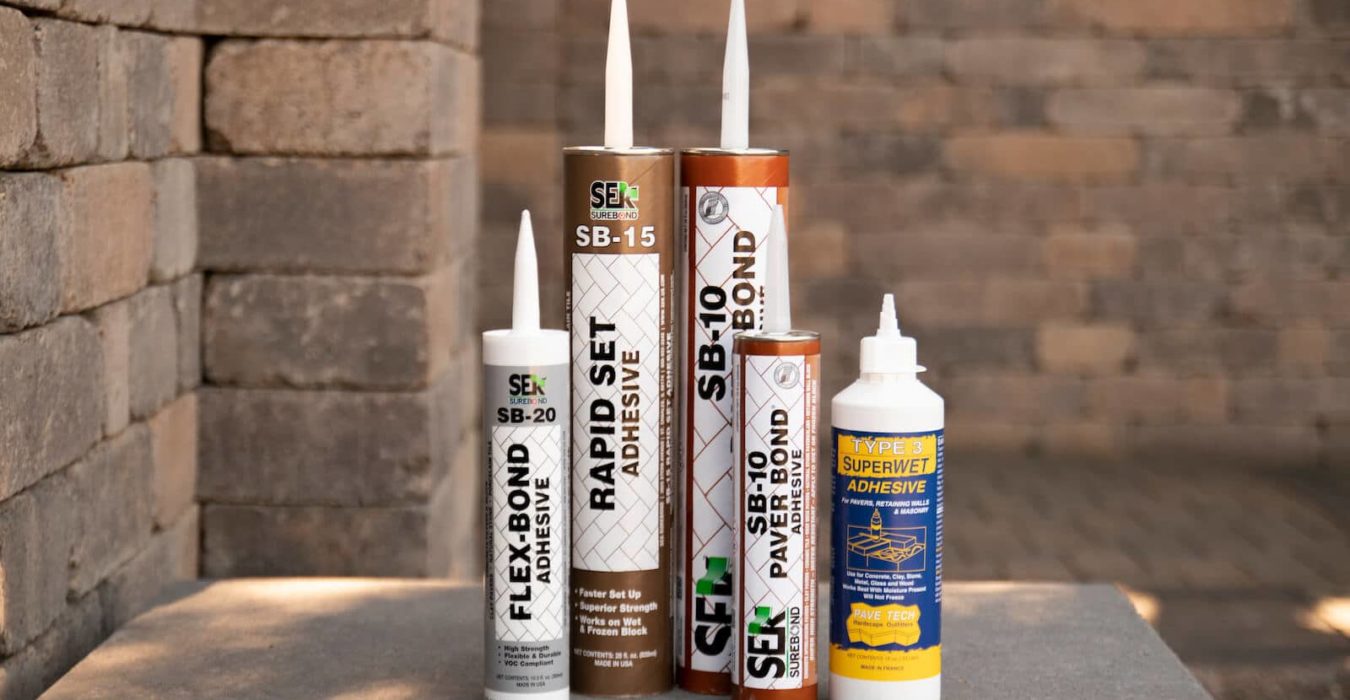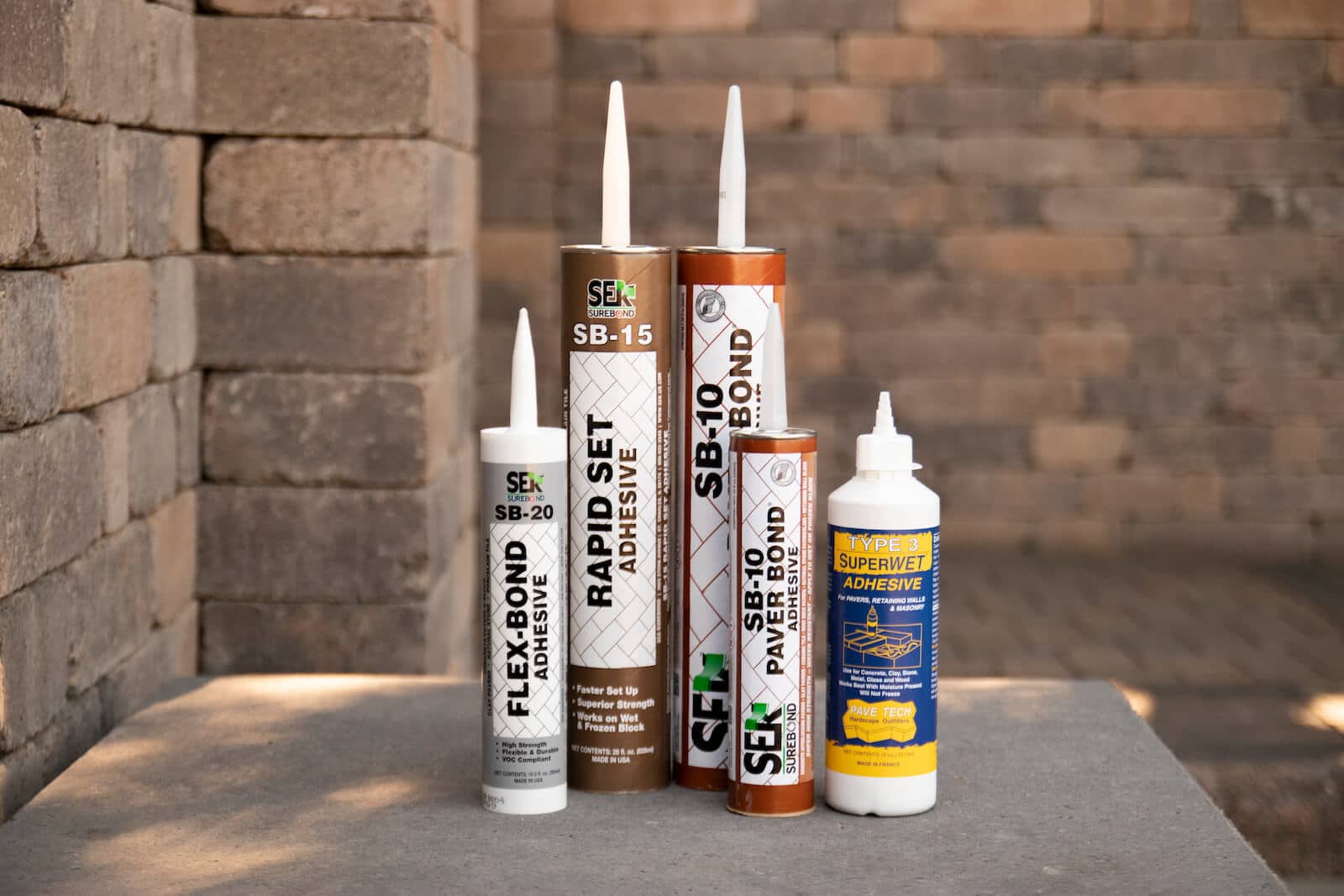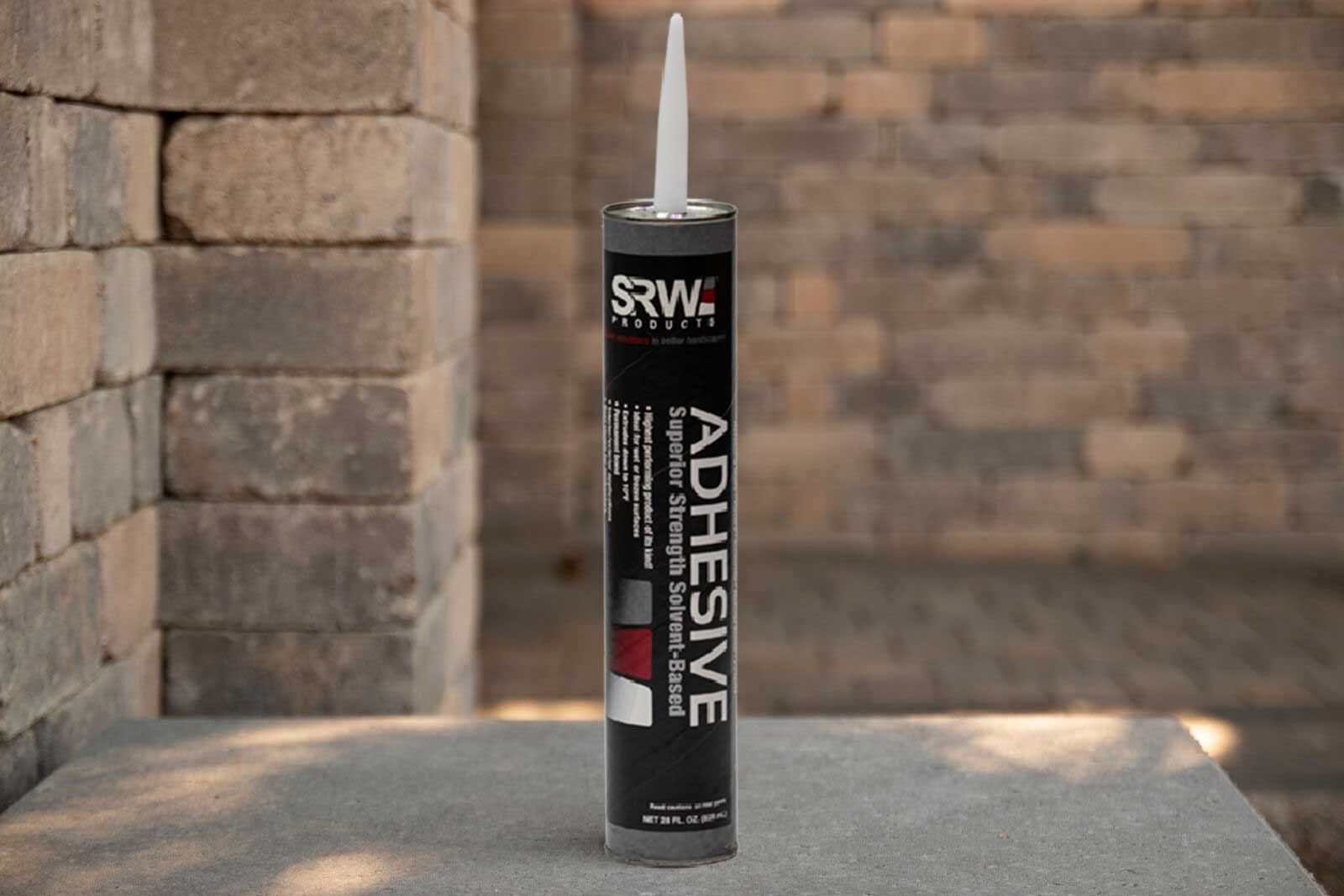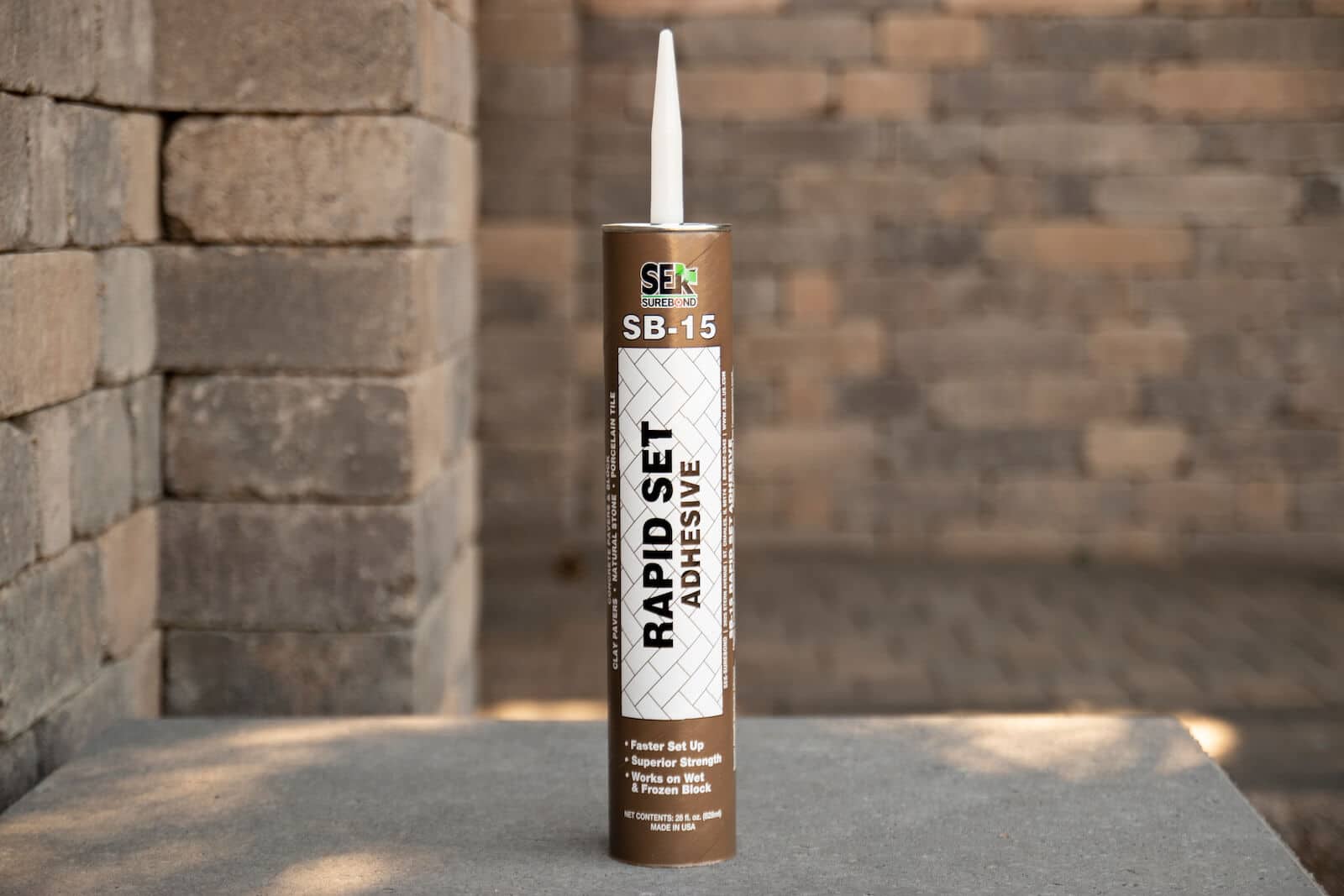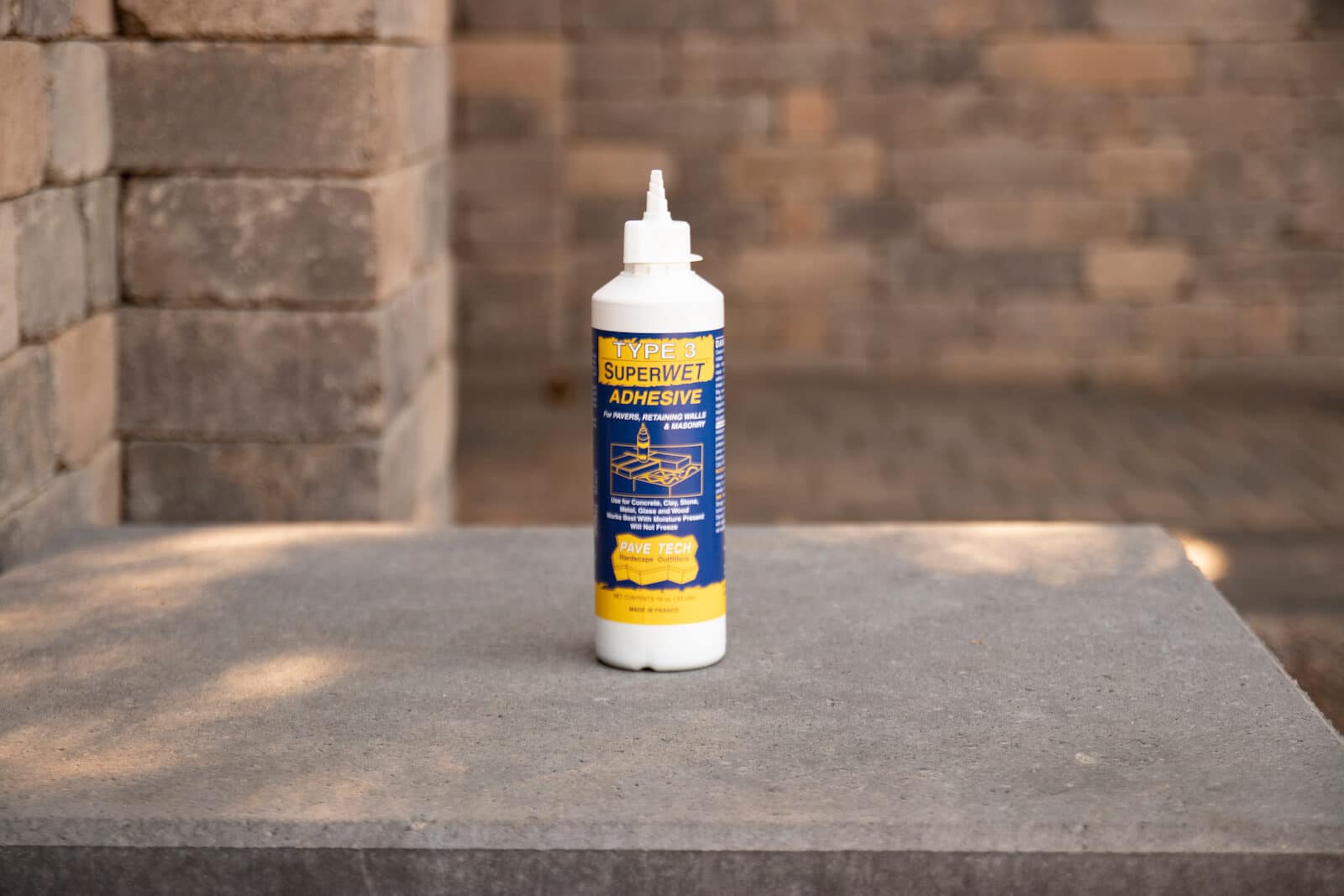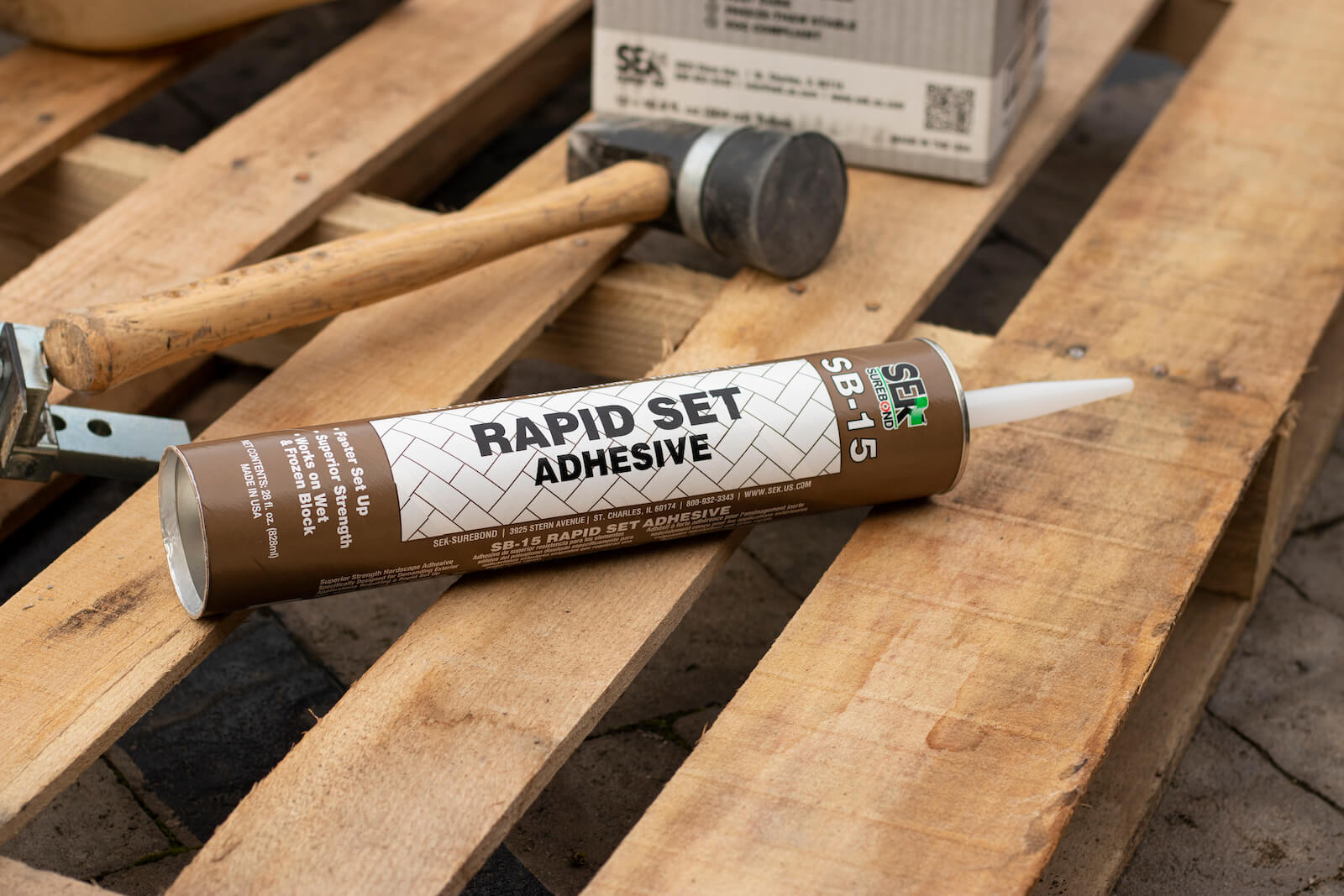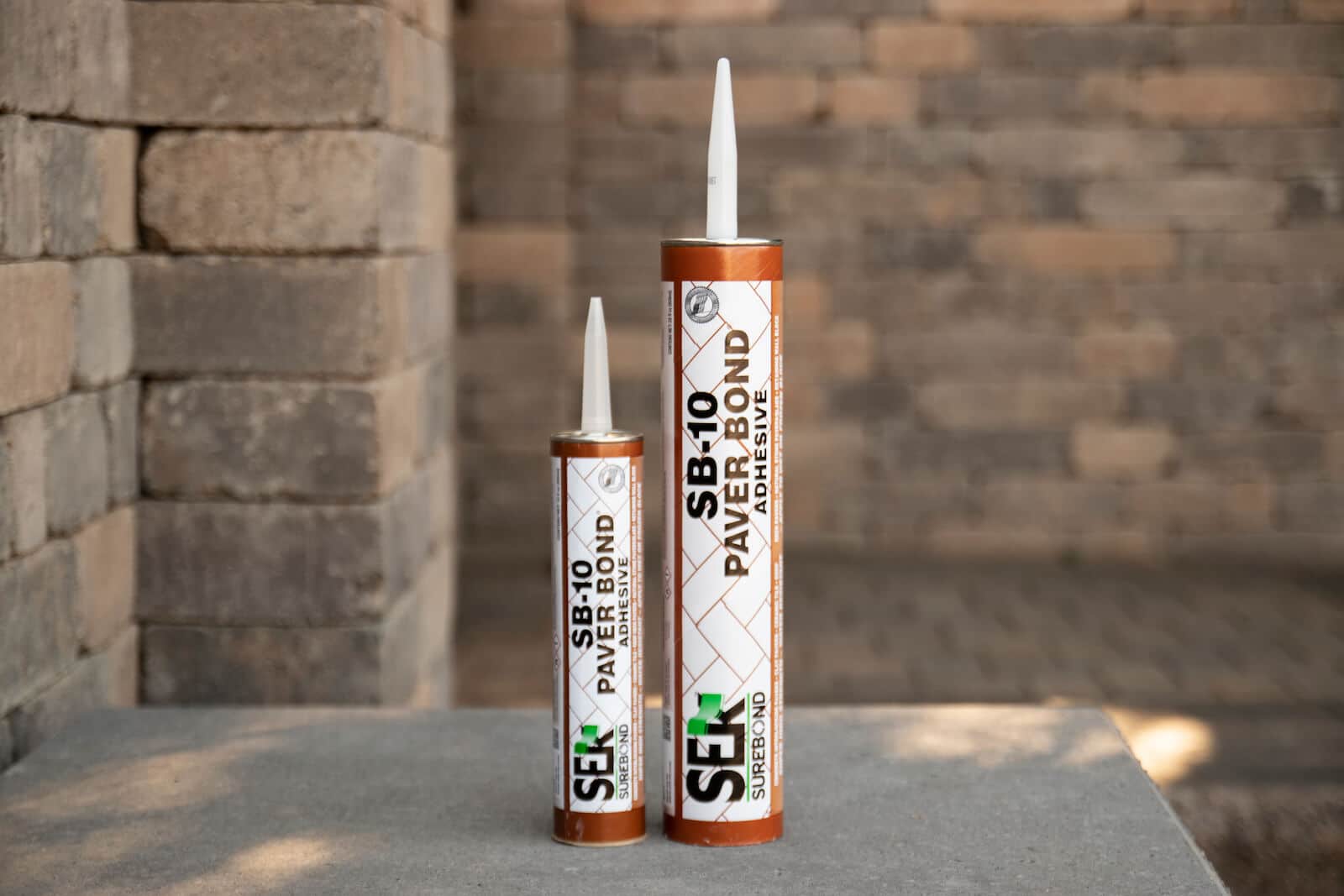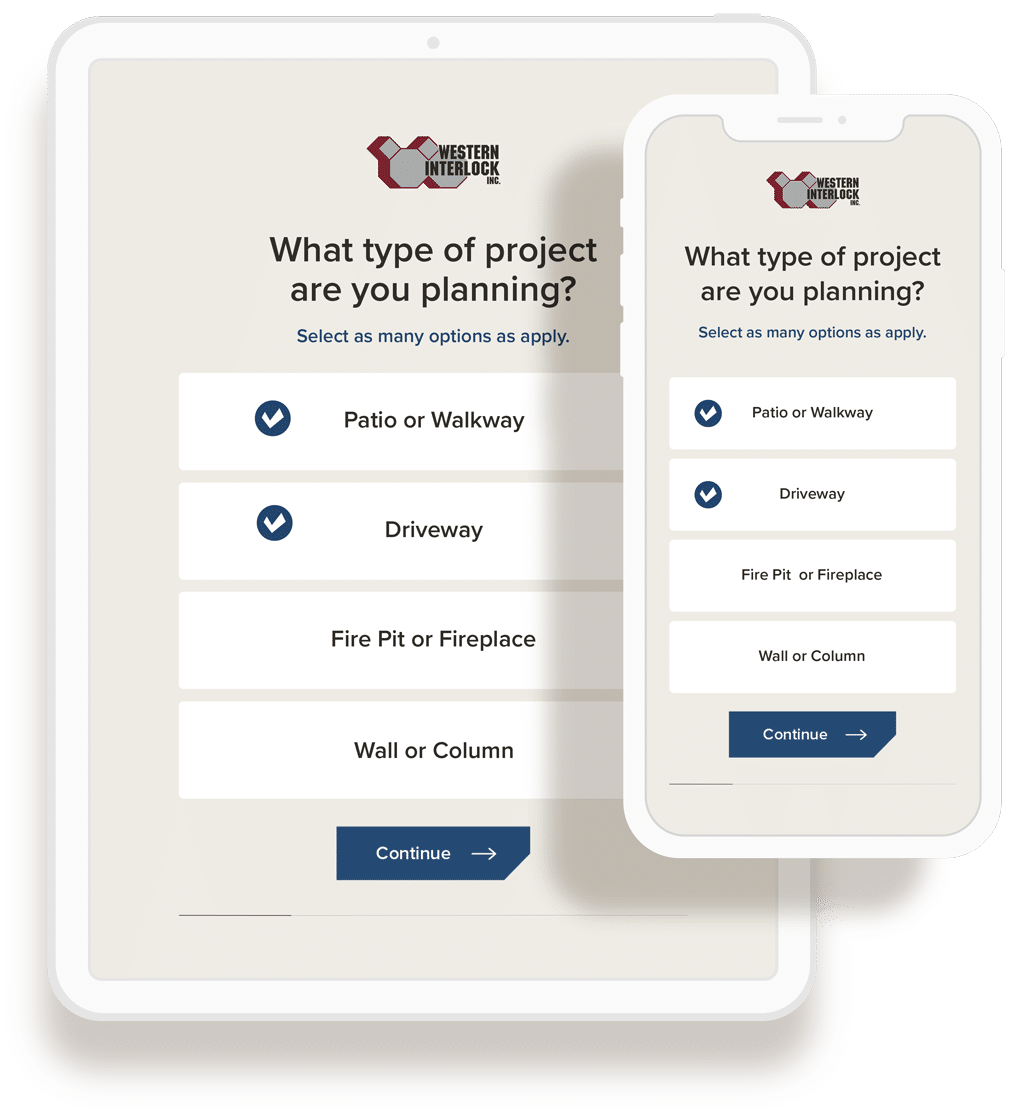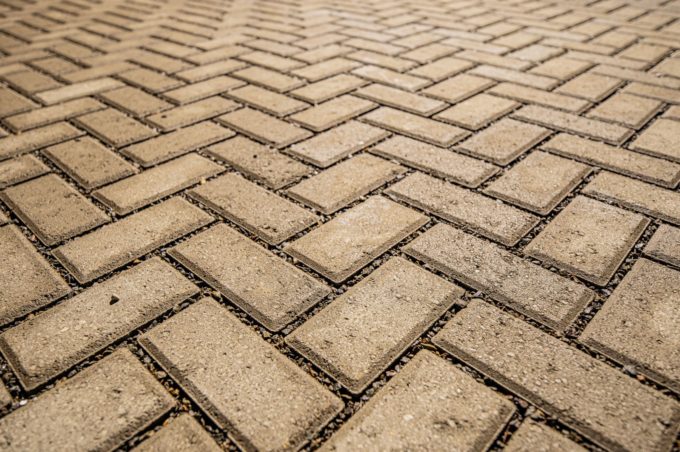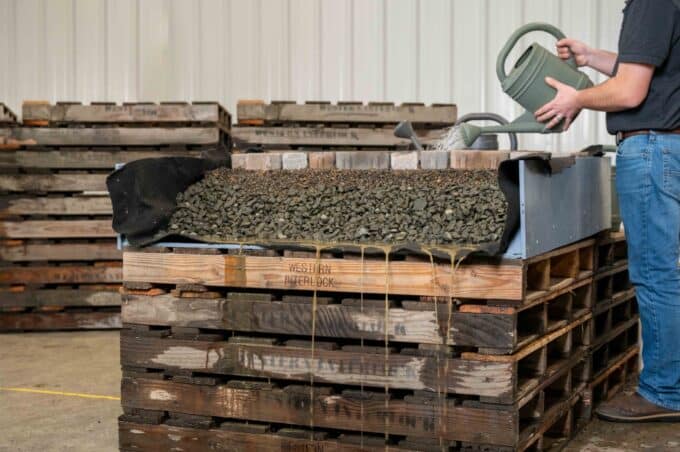Get our FREE Project Planning Guide
"*" indicates required fields
If you are installing a hardscape in your yard, you may wonder if you should use a paver adhesive to bond the stones to each other. How do you choose which paver adhesive to use? Once you’ve selected one, how do you use it?
This article will educate you on when and how to use a paver adhesive, and the various paver adhesive products that are available.
When to use paver adhesive
So, when SHOULD you use a paver adhesive? There are five main times a glue should be used:
- When building non-structural stacked block projects
- To bond cap stones to fire pits, garden walls or retaining walls
- To keep small cut pieces from pulling out of a hardscape
- To bond wall niches in place
- To fill cracks in concrete.
What are the best paver adhesive options?
SB-10—Sure-Bond
This adhesive is a strong adherent that can be applied even on wet and frozen blocks. It sets up quickly and is rigid and durable. It is solvent-based and will begin to harden in only ten minutes. SB-10 will be able to stand hard use and even heavy traffic from vehicles.
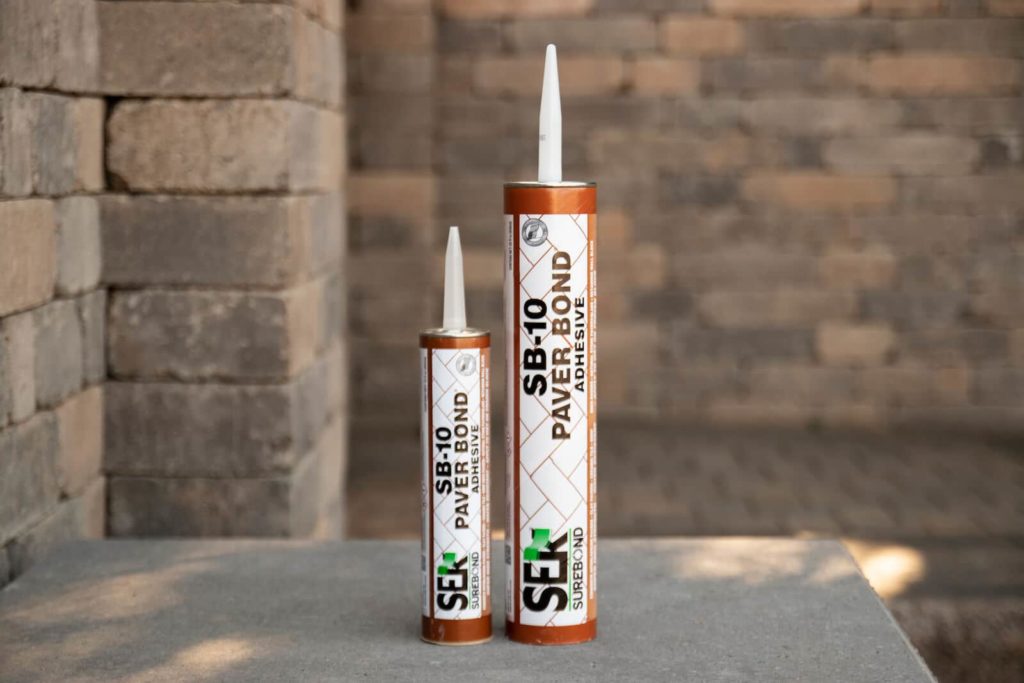
SB-15—Rapid Set
If you are looking for an adhesive that is strong and sets up quickly, you may want to try SB-15, our Rapid Set Adhesive.
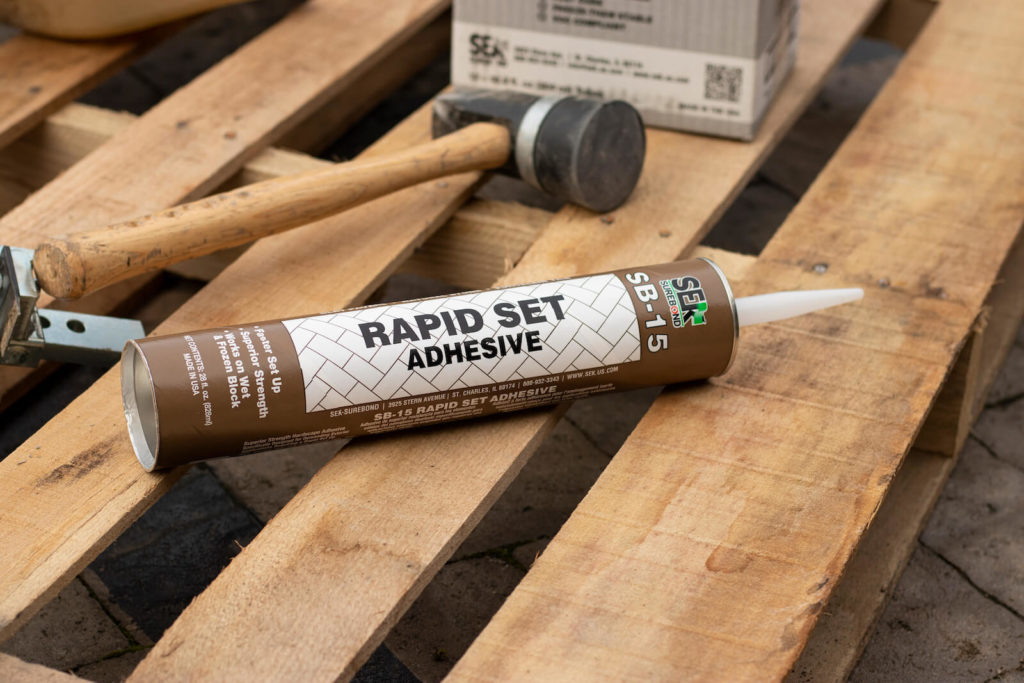
Our Rapid Set Adhesive is our fastest and strongest. It has a rigid and durable bond, and can be applied even on wet or frozen pavers. It can withstand extreme wear and tear, including the weight of heavy vehicular traffic. The SB-15 can be easily applied with a standard caulking gun. It sets up quickly and is superior in its toughness.
Flex-Bond SB-20
The Flex-Bond SB 20 is high in strength and VOC compliant. The solvent-free formula of the SB-20 can withstand the most extreme service conditions. It’s high viscosity helps you level and shim coping and caps. You can easily apply it with a standard caulking gun to wet or dry surfaces, as long as they are not frozen. Use Flex-Bond SB-20 for things like steps, walls, firepits, or anything that might have significant leverage.
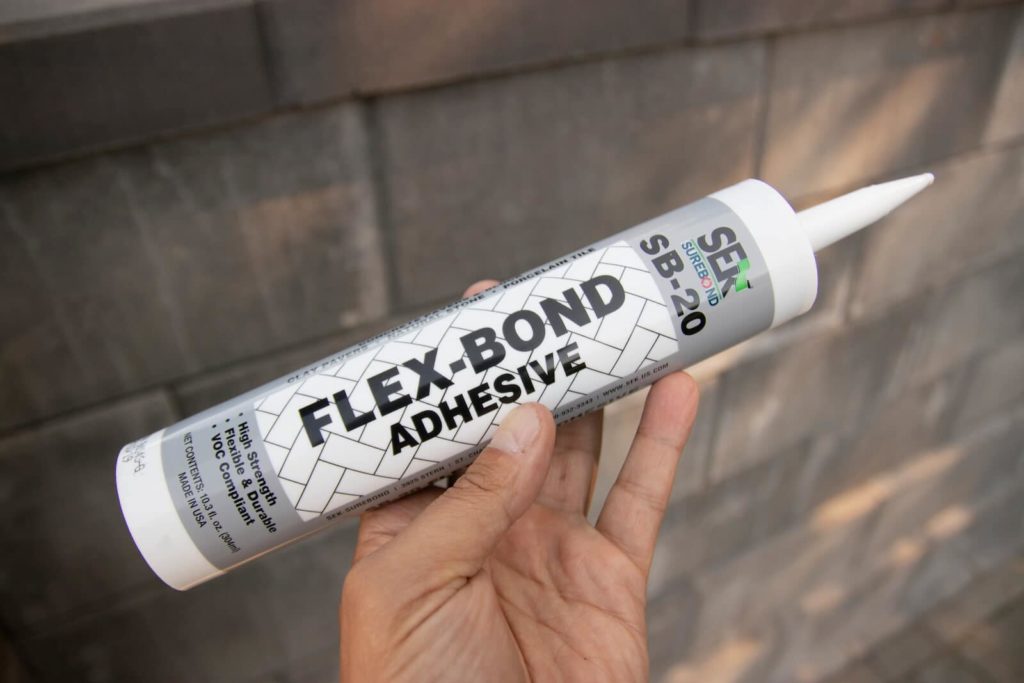
Super Wet Adhesive
For areas that will be subject to heavy loads, you will want to use our Super Wet Adhesive. This adhesive is great for retaining wall blocks and stair treads. It is ideal for step veneering, pool coping, and freeze-thaw areas. The Super Wet Adhesive is versatile in that it can be applied in temperatures from 35-110 degrees Fahrenheit.
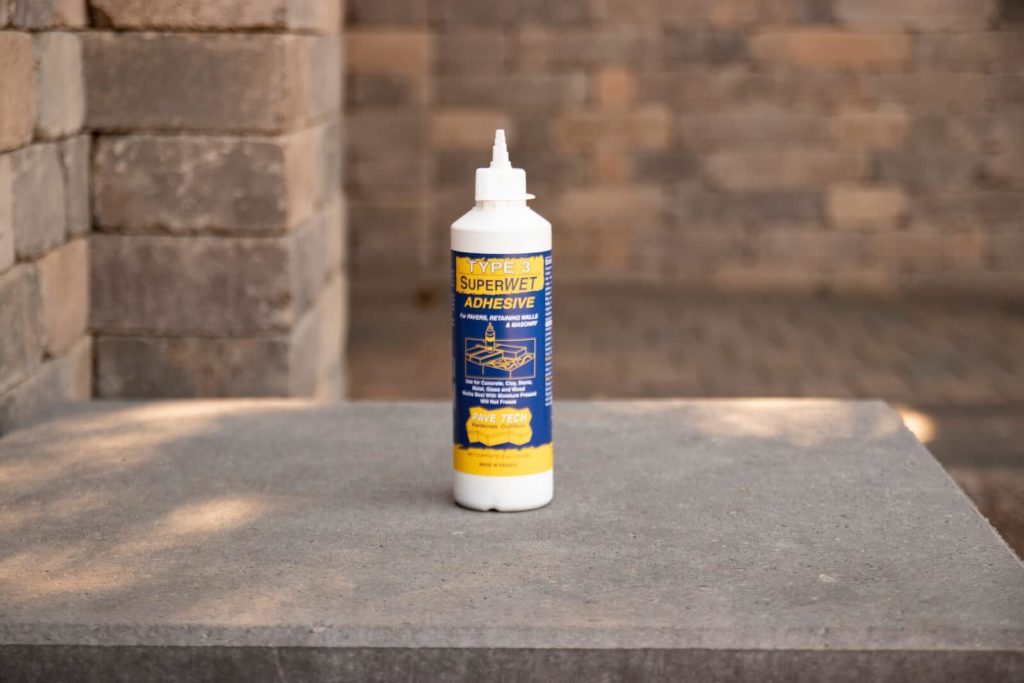
SRW A28 Solvent-Based Adhesive
The SRW A28 Solvent-Based Adhesive is formulated to be used for a wide variety of materials. It can be used for retaining walls, pavers, block, masonry, concrete, aluminum, steel, natural stone, and the most common landscaping materials. The SRW A28 can be used indoors or outdoors and works on both wet and frozen surfaces. It is superior in strength and will bond permanently.
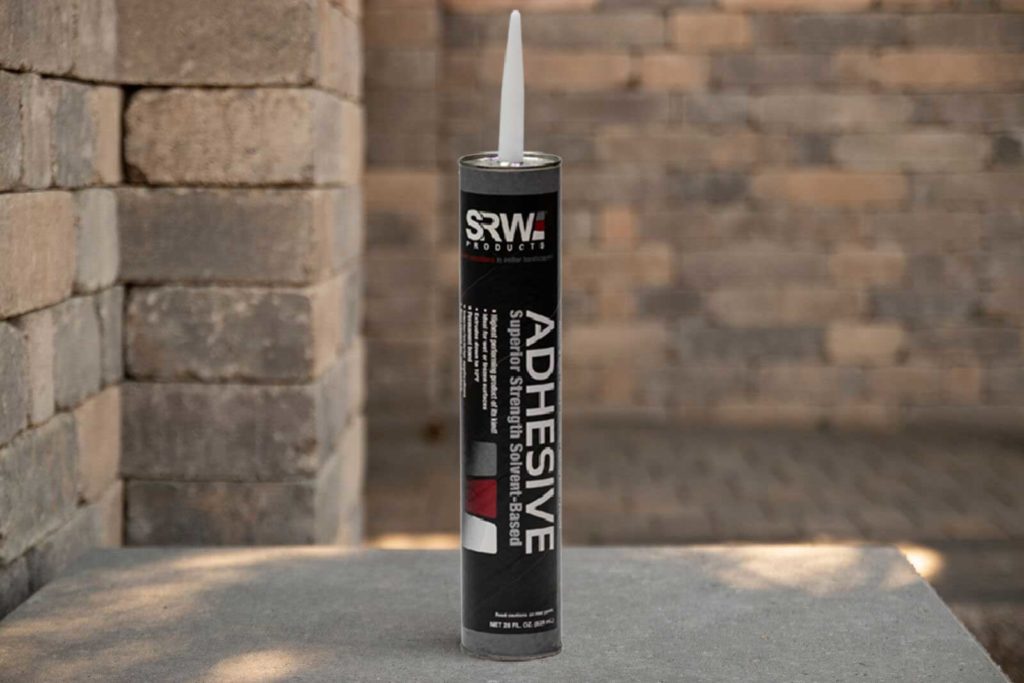
How to use paver adhesive
There are five simple steps to successfully applying paver adhesive:
- Cut the tip of the tube to the desired bead size of material needed. Make sure you do this carefully, as it greatly affects the size of the caulk stream that will come out. You also will want to insert a screwdriver or wire into the inside of the tube to break the inside seal.
- Insert the tube into a caulk gun, and pull the trigger to begin releasing the caulk.
- Apply the Polyurethane Construction Adhesive in a zigzag pattern, using your finger to wipe off the excess caulk, if needed.
- Press the items you are working with firmly together to ensure they have good contact with the Polyurethane Construction Adhesive and will be sure to adhere to each other.
- Allow the Polyurethane Construction Adhesive to set for 24 hours without disturbance in order for the pavers to dry firmly and stay stuck together for a long time.
Do you need help doing it yourself?
Watch more DIY tutorials to learn other important details about hardscape and steps you should take to install your own pavers.
Get our FREE Project Planning Guide
Tell us where to send it and we’ll email the backyard planning guide to you right away!
"*" indicates required fields


